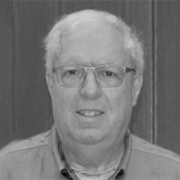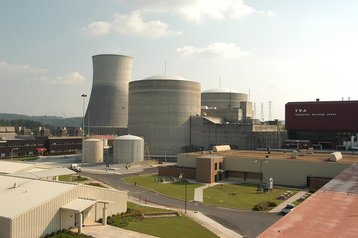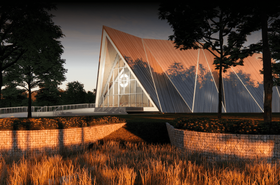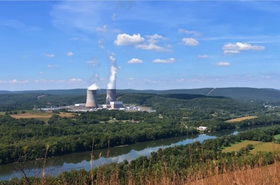Late last month, we heard unconfirmed reports that Microsoft and OpenAI plan to build a $100 billion 'Stargate' supercomputer that would require 5GW of electrical power when completed sometime in the 2030s.
The project is expected to rely on nuclear reactors to generate the required power for the site's computers. The trade press report cites a 2028 launch date to start work on the facility.
This is a big project and comes with a boatload of questions about its feasibility. The questions, and some plausible answers, follow.
Who will build 5GW of nuclear generation capacity?
As big as they are, none of the major IT platforms, like Microsoft, Google, or Amazon, are going to get into the business of building 5GW of nuclear reactors or nuclear reactors of any size. The primary form of access to nuclear power for these firms will be through power purchase agreements with nuclear utilities.
Microsoft has already taken this approach with Constellation, and Amazon purchased a data center outright due to its lash-up with a nuclear utility in Pennsylvania.
Neither of these deals are at the scale needed to provide 5GW of power. Who or what organization/firm would be in the position to accept commitments of Power Purchase Agreements (PPAs) to build at this scale?
The problem of capital formation for any utility or state-owned enterprise to build 5GW of nuclear generating capacity is on the order of $30-40 billion for 5GW of nuclear power. The time frame for completion is at least a decade, and that's just for the power. A whole separate timeline, financing package, and construction project would be needed to build the data center.
So far, globally, there are only a few examples of new nuclear builds at this scale - in Russia, Akkuyu in Turkey, El Daaba in Egypt (the latter two being four units of 1,200MW each or 4.8GW). And then there's China, which is simultaneously building 30GWe, composed of multiple 1,000MW+ reactors commercial scale nuclear power plants.
There is no way Microsoft or any other western IT platform will host its AI data centers located on the Chinese mainland, where the latest chips are barred from being sent to. A similar barrier exists for considering data centers tied to Russian-built nuclear power plants.
The United Arab Emirates (UAE) has built and commissioned 5.6GW of nuclear generating capacity (four units at 1.4GW each). The UAE contracted with a consortium of South Korean firms. It took over a decade for all four 1.4GW units in the UAE to be completed at a cost of about $30 billion. The fourth unit just entered revenue service this month. The first unit broke ground in 2012.
In the UK and France, French state-owned enterprise EDF is building multiple 1.6GW nuclear reactors and every one of them is suffering from serious cost increases and schedule delays. These include the Hinkley Point and Sizewell projects in the UK and the Flamanville project in France. The state-owned enterprise has just undergone a major reorganization in an effort to streamline its path forward to building eight new reactors in France to start the process of replacing the nation's current and aging fleet of power stations. Clearly, EDF has a full plate.
In the US, Westinghouse successfully completed the construction of two AP1000 1,150MW commercial reactors at the Vogtle site in Georgia, but it delivered the two reactors seven years late and $17 billion over budget.
The Associated Press reported Vogtle’s costs and delays could deter other US utilities from building nuclear plants, even though they generate electricity without releasing climate-changing carbon emissions.
A separate and similar Westinghouse project in South Carolina failed driving the firm to seek bankruptcy protection. The failed project left South Carolina ratepayers holding the bag for $9 billion on costs. The blame for the failure of the V. C. Summer project, twin AP1000s, resulted in several felony convictions of executives from the utility for their roles.
Overseas, Westinghouse signed an agreement with the government of Poland to build six AP1000s (6.9GW) in that country. However, financing the project on the Polish government side remains a work in progress. Westinghouse and its partner Bechtel Corp. declined to take an equity position in the project. Westinghouse is involved in a similar deal in Bulgaria for two AP1000s which faces similar challenges to finance it. The firm is also a bidder to build a new reactor for CEZ, the state-owned utility in the Czech Republic.
Where could the US data center and reactors be built?
The US has a number of sites that were previously considered for new nuclear reactors.
For instance, Duke Power at one time considered building twin AP1000s at sites in Florida (Levy County), South Carolina (Wm States Lee), and North Carolina (Shearon-Harris) for a total of six reactors and 6.9GWe of power.
Separately, across the US there are more than a dozen planned nuclear power projects that sought or also obtained NRC licenses that were never built. One or more of them could be candidates for nuclear power projects to power data centers.
Should Microsoft build the entire data center at one site?
A question Microsoft might consider is whether to assemble its needed 5GWE of nuclear-generating capacity via a network of 1GWe power plants rather than building one single site with all 5GW of power on it?
Given the capital requirements needed to finance the data center and the nuclear reactors to power it, an alternative would be to build five separate 1GW data centers over time. Since Microsoft is a global enterprise, a more efficient approach could be to build the five units in different parts of the globe rather than in one place.
This approach would spread the risk for capital formation, attract more investors on a country-by-country basis, and shorten the completion time to have 5GW of nuclear power and data processing power available. The reason is the five separate joint data and power facilities in different parts of the globe could have closer start dates to each other. Candidate countries include the UK, France, Sweden, Finland, Poland, Romania, the Czech Republic, India, and South Korea.
India is of particular interest as NPCIL recently changed a long-standing policy and will now allow private enterprises to fund new reactors. India is building a fleet of domestic design 700MW PHWRs. According to the World Nuclear Association, NPCIL intends to set up five "Nuclear Energy Parks," each with a capacity for up to eight new-generation reactors of 1,000MWe each.
However, challenges with this approach exist. First is the fact that they would not operate as a single supercomputer, which appears to be a core requirement for OpenAI. The latency posed by the separation would render it impossible to handle a single training run across continents.
Secondly, shifting it across multiple countries would lead to regulatory headaches for OpenAI, which has preferred to keep its training in the US to avoid challenges.
How much land would a 5GWe data center need?
Microsoft's $1 billion supercomputer data center now under construction in Mt. Pleasant, WI, is expected to cover 1,030 acres when completed in 2034. The firm is buying raw undeveloped land for the project.
In terms of Microsoft's plans for a 5GWe data center, and possible co-location of nuclear reactors to power it, the land area required includes the acreage for the data center and the enormous physical footprint for the nuclear reactor which would have a buffer zone around it for safety and security reasons.
What's involved in the engineering, procurement, and construction of the data center?
There are huge challenges for the supply chain, e.g., long lead time components for the reactors and a parallel challenge to hiring the workforces to build the reactors and the data centers.
There are long wait times for reactor pressure vessels, steam systems, turbines, and switchyard transformers. The procurement cycle for five 1,000GWe nuclear reactors would easily spread over a decade. The supply chain for the computer centers themselves would also be taking place on an unprecedented logistical scale in terms of manufacturing, installation, and acceptance.
In terms of project management, a 1,000MWe nuclear power plant takes, in a best-case scenario, four to five years to build and a construction workforce of about 4,000 or more people. Staffing the reactors requires a permanent technical and administrative staff of 400-600 workers for each site. While data centers are highly automated, humans are still needed to keep them up and running. Overall, the location of the data center(s) and their nuclear power plants would have huge socio-economic impacts on any community where they were located.
What about the need for water for cooling the reactors and the data centers?
Massive data centers, which have enormous demand loads for cooling water, share that profile with nuclear power plants. The dispersal of the heat loads from both types of facilities will require enormous amounts of water which would likely compete with other use types in the region where the data center is built.
Coastal sites to use seawater for cooling might be the best option, especially for the reactors. A good example is the Diablo Canyon twin reactors on the Pacific Ocean coast near San Luis Obispo, CA.
Is the federal government doing anything about getting more power for massive data centers?
Last month on a visit to Michigan, DOE Secretary Jennifer Granholm said the Biden administration wants to "accelerate" its conversations with big technology companies on how to generate more electricity — including with nuclear power — to meet their massive demand for artificial intelligence computing.
Granholm made her remarks after announcing a $1.52 billion loan to Holtec International to reopen the 800MWe Palisades nuclear power plant.
The growing demand for power from AI and data centers is a "problem" that needs to be addressed, Granholm told Axios in a wide-ranging interview.
She noted that DOE is exploring how technology firms like Microsoft, Google, and Amazon might be able to host small nuclear plants on the campuses of their massive data centers. She said conversations with the big companies need "to accelerate, because this demand for power is only going up." Small nuclear reactors (SMRs) come in various designs but generally offer between 50-300MW of power.
Only one US developer, NuScale, has successfully completed the NRC review to license its 77MW light water reactor SMR. NuScale offers the SMR in configurations of two, four, and six units. Other US vendors of SMRs include GE-Hitachi with a 300MW SMR and Holtec International with a similar size SMR.
GE Hitachi has an agreement with the Tennessee Valley Authority (TVA) to build up to 800MW of SMR-based generating capacity at the utility’s Clinch River site. The firm has a similar deal to build one or more SMRs at Ontario Power Generation’s Darlington site. Holtec says it plans to build two SMRs at the Palisades site in Michigan and is considering the decommissioned Oyster Creek nuclear site in New Jersey for a similar project.
Granholm didn't mention it, but one of the other issues facing data center developers looking for power is grid access to power plants that are not adjacent to the data centers. The Federal Energy Regulatory Commission (FERC) is supposed to be "reforming the process” by which new high-voltage electricity transmission lines are approved for construction and operation.
A huge backlog of decisions indicates the agency has its work cut out for it. According to S&P Global, at the end of 2022, more than 2,000GW of generation and storage — equal to all existing US generating capacity — were waiting in interconnection queues, and successful projects can face wait times of up to five years to connect to the grid.
Is Microsoft’s Stargate a case of overreach?
In summary, it is worth asking one final question, and that is whether Microsoft's plans for a 5GWe data center are overreach?
While the firm wouldn't be in the business of building nuclear reactors, its plans to offer commitments of PPAs for nuclear power at this scale would put any single publicly traded electric utility in a "bet the company" posture.
Based on experience in the US so far, with the Westinghouse reactors in Georgia, it is doubtful, at least for now, that any US nuclear utility would step up to the plate to take on the project even with Microsoft's deep pockets writing the checks. Microsoft has a big job ahead of it and that is to convince power producers in the US, or globally, that it isn't biting off more than it can chew.











